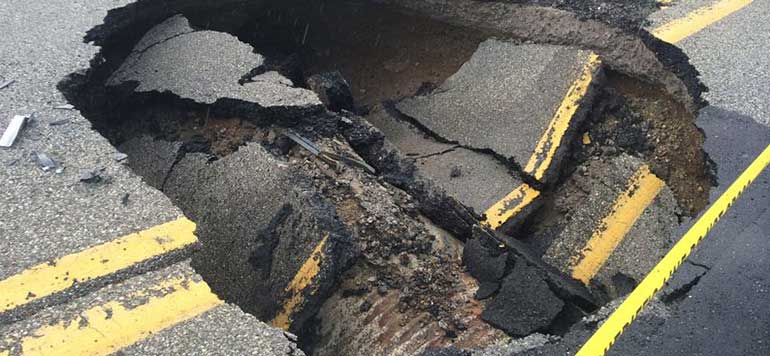Why Do Some Culverts Fail?
Culverts are man-made channels that allow water to travel underneath roads, driveways, railroad tracks and the like. Without culverts to aid in the flow of water, washed-out roads would be very common, as would erosion damage.

You might have a culvert under your driveway or under an access road on your property, or simply to connect one low-lying area to another to aid water flow. Whether you’re dealing with culverts that are big or small, it’s important to know that sometimes culverts can fail, and to know how to prevent this from happening.
Woody Debris Is a Major Culprit
Water can’t pass through a culvert if the entrance is blocked. Large pieces of wood that get caught in front of the culvert can cause major water flow disruptions if they are not removed. Debris that would normally pass through the culvert unhindered, such as smaller sticks, leaves or vegetation, will catch onto the wood. Soon a thick mat of debris will block the entrance of the culvert, and water will be diverted elsewhere, significantly increasing the risk of unwanted erosion.
Culverts Are More Likely to Clog After Large Storms
Powerful storms with strong winds can knock down trees and send large pieces of wood into the path of the culvert. And it’s not just large branches that get knocked down during these storms, but also debris in general. As a result, there is great potential for the culvert to be blocked in a very short amount of time. And if the storm continues to dump large amounts of water, the area is likely to flood if water cannot pass through the blocked culvert.
Erosion Inside Metal Culvert Pipes
A slower, but no less significant, way that culverts lose their integrity is due to erosion inside the culvert itself. This is particularly likely to happen inside metal culvert pipes. Small rocks and bits of dirt that are propelled through the water will slowly chip away at the culvert. It’s possible for the pipe to collapse if it is no longer structurally sound due to this erosion.
Erosion is a major contributing factor to the collapse of culverts, but sometimes poor materials are to blame. Culverts should be built with long-term use in mind, in which they should be structurally sound for, ideally, 100 years or more.
The Consequences of a Failed Culvert
In areas that are ecologically fragile, a failed culvert could devastate local flora and fauna due to habitat damage or loss.
But failed culverts are also a threat to human safety, especially those that are located under roadways. A collapsed culvert can bring down an entire roadway, detouring traffic and costing taxpayers money in emergency repairs. Private landowners also face property damage and high repair costs when a culvert fails.
Retaining the Integrity of Culverts
To keep culverts in good condition, it’s important to inspect them as soon as possible after a major storm in order to remove any debris that is blocking the entrance. Always wait until it is safe to access the culvert before servicing it!
Although storms are most likely to bring down the woody debris that cause major blockages, it’s good practice to inspect the culverts regularly for large debris.
When installing a culvert, protect it from erosion by putting dirt and large stones around the lower half, throughout the length of the culvert. This way, any pebbles and silt that pass through the culvert will erode the rocks rather than the pipe itself.
For new culverts, be aware of the limits of your chosen material. How much weight can it support? How long will it last before it naturally begins to break down? How susceptible is it to erosion and other damage? It’s worth investing in the best material for the job up-front rather than pinching pennies. You’ll only end up paying for it in the future when you have to replace the damaged culvert.
If you’re in the Houston area and want to make sure your new culvert will last as long as possible, contact us for assistance.
Join our newsletter
Subscribe to our weekly newsletter chalked full of useful tips, techniques, and design goodies.

